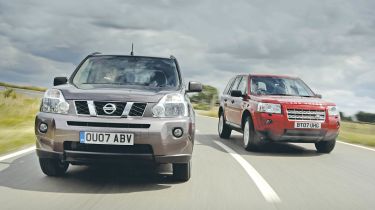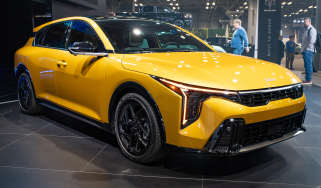Nissan X-Trail vs Land Rover Freelander
Land Rover set the ball rolling with its new Freelander late in 2006, when the compact SUV instantly became our top-rated model in the class. But this summer Japanese firm Nissan hit back with its second-generation X-Trail.

Land Rover set the ball rolling with its new Freelander late in 2006, when the compact SUV instantly became our top-rated model in the class. But this summer Japanese firm Nissan hit back with its second-generation X-Trail.
With its blend of comfort, quality and refinement, the Freelander feels like a shrunken Discovery: it’s relaxing and luxurious to drive, accomplished off-road and poised on tarmac. It isn’t as agile or sharp as the X-Trail, largely because it’s heavier and so rolls more through corners, making it less eager to change direction. But the Land Rover is a composed and capable car, isolating you from the world outside with its supple ride and low noise levels. The cabin is also similar to its big brother’s, and it certainly feels more expensive inside than the Nissan.
What this means is that the Freelander has stepped up a sector and now behaves more like a premium model, its price and quality putting it in a different market to the more family-oriented X-Trail. However, that’s not to say the Nissan suffers in comparison. It boasts a far larger and more user-friendly boot, generous passenger accommodation and, although the driving environment has been toned down, it remains well structured and robust.
The Nissan has a strong 2.0-litre diesel engine and acceptable ability in the rough, too. True, it’s not a revolutionary step forward, but the X-Trail improves on all the old model’s strengths. It’s also superb value for money, so picking a winner here came down to what you want from a compact SUV: the Freelander is desirable, comfortable and refined, while the Nissan has the edge for family-friendliness, is better value and equally good to drive. The Land Rover just edged victory, but in reality each model is a winner.






